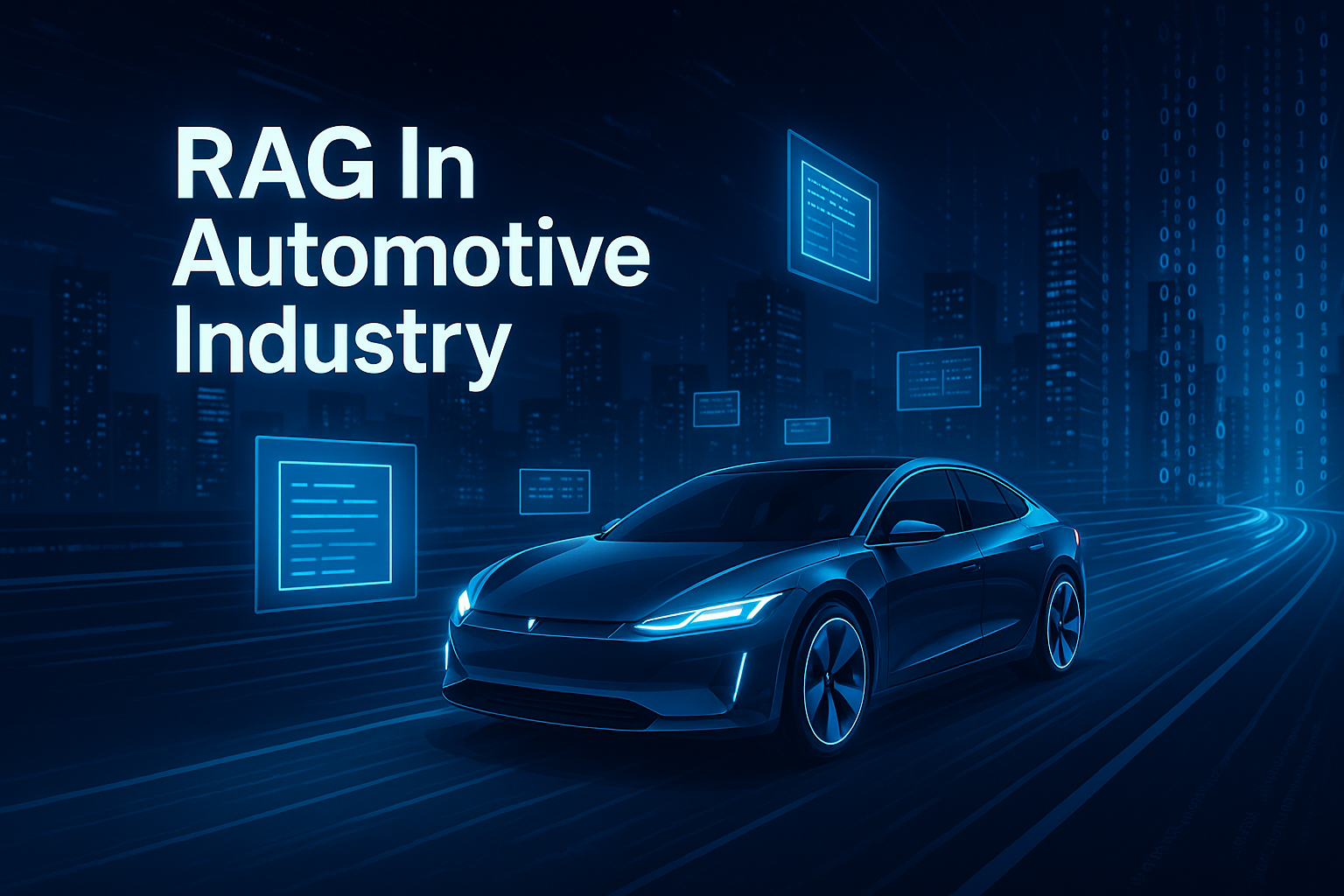As the automotive industry evolves with rapidly changing technologies and content, traditional knowledge systems struggle to meet the diverse needs of engineers, dealers, and end-users. Retrieval-Augmented Generation (RAG) combines retrieval with generation to deliver precise, context-aware answers in real time. This article, based on a real-world case from maadaa.ai, demonstrates how RAG is applied in the automotive sector through system architecture, dataset construction, practical use cases, and measurable impacts.
1. Introduction: Why Automotive is a Natural Fit for RAG
The automotive industry is a perfect testbed for RAG systems. It features:
· Rich documentation (manuals, maintenance guides, tech bulletins)
· Diverse user roles (engineers, dealers, drivers)
· Constantly changing content (new models, software updates, safety regulations)
Traditional knowledge systems struggle to unify this complexity. RAG, with its retrieval-first design, offers a way to dynamically surface the right information, tailored to context.
2. Example Use Cases in Automotive AI Assistants
2.1 Tech Support Assistant
User: “How to fix unresponsive side mirror?”
-
Retrieves TSBs and repair guides
-
Suggests: “Check wiring harness. If issue persists, replace side mirror module at a service center.”
2.2 Pre-Sales Q&A and Configuration
User: “Looking for a family SUV under $15k.”
-
Retrieves database of vehicles + reviews
-
Recommends models with price-performance analysis.
2.3 OTA & Autonomy Insights
User: “What changed in the latest software update?”
-
Parses OTA release notes
-
Responds: “ACC logic improved for smoother low-speed following.”
3. The RAG System Architecture at maadaa.ai
To build a robust RAG platform tailored for automotive use cases, maadaa.ai adopted a modular and scalable architecture.
3.1 Document Processing & Embeddings
-
Ingests PDF, HTML, scanned documents
-
Smart chunking based on semantic and structural signals
-
Generates vector embeddings (MiniLM, BGE, etc.)
3.2 Vector + Filtered Retrieval Engine
-
FAISS or other vector DB backends
-
Filters for make/model/year to narrow results
-
High-speed indexing with support for continuous updates
3.3 Answer Generation via LLM
-
Fine-tuned models with automotive-specific knowledge
-
Multi-document generation with citation references
-
Response grounded in retrieved chunks to ensure faithfulness
4. Dataset Construction: How maadaa.ai Did It
4.1 Real-World Query Collection
-
Pulled from actual customer service logs, online forums, product feedback
-
Covered use cases: vehicle issues, features, pricing, diagnostics, etc.
4.2 Annotation Pipeline
-
Each query tied to document chunks that contain the reference answer
-
Annotations reviewed using inter-rater agreement (Kappa ≥ 0.7)
-
Addressed edge cases and ambiguity through expert-algorithm collaboration
4.3 Evaluation Metrics Across Modules
-
Retrieval: Recall@5, Precision@10, document relevance scoring
-
Generation: Faithfulness, factual correctness, safety
-
Dialog Flow: Answerability, rejection logic, time sensitivity
5. Impact and Learnings
-
+30% accuracy improvement vs traditional keyword-based QA
-
Reduced average handling time for complex technical inquiries
-
Modular system supports fast onboarding of new models or features
-
Closed-loop feedback between evaluation data and model retraining
6. Our Thoughts: RAG is More Than Just a Model
The case of maadaa.ai shows that building a usable RAG system in industry takes more than just stitching together a retriever and a generator.
It demands:
· Deep domain understanding
· Carefully constructed evaluation datasets
· Stable annotation processes with trained teams
· Real-time feedback between model, data, and human reviewers
In the AI-native future, RAG is poised to become the foundation for enterprise-grade, trustworthy, knowledge-aware assistants. Data is both its engine and compass.
Looking to deploy RAG in your industry with high-quality datasets and proven expertise?
Contact maadaa.ai today to get a tailored solution and free dataset consultation.



